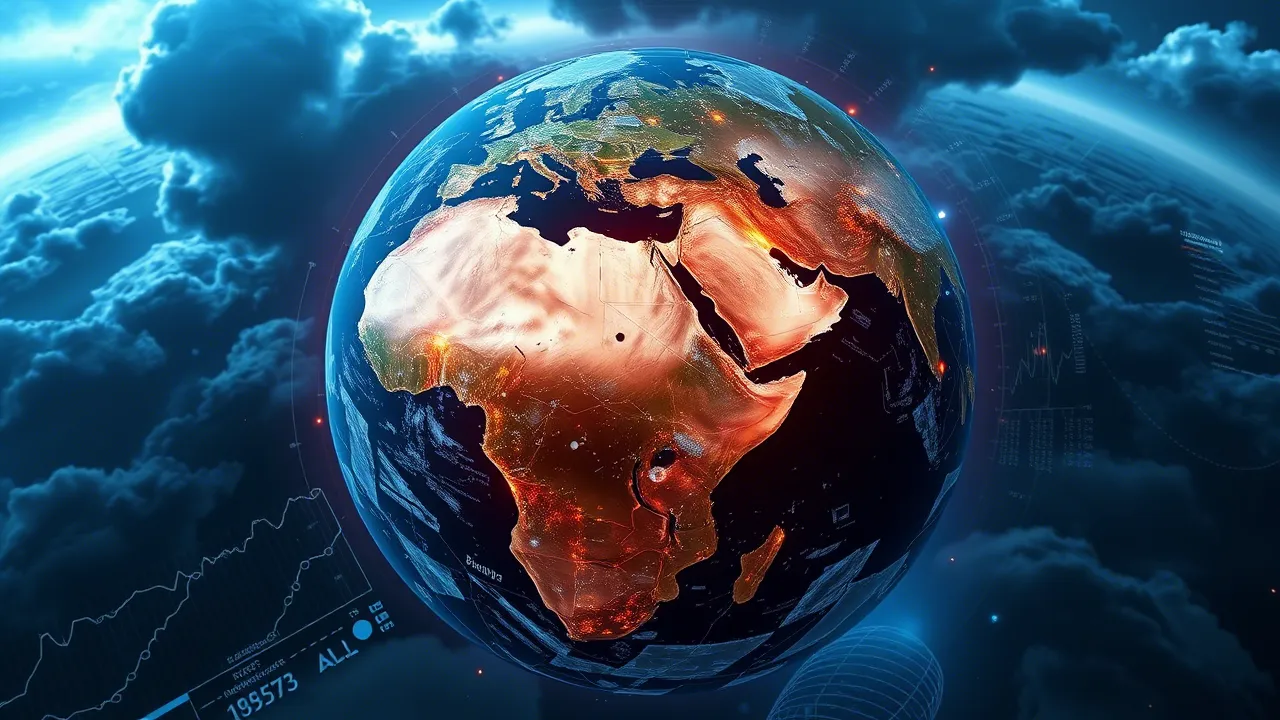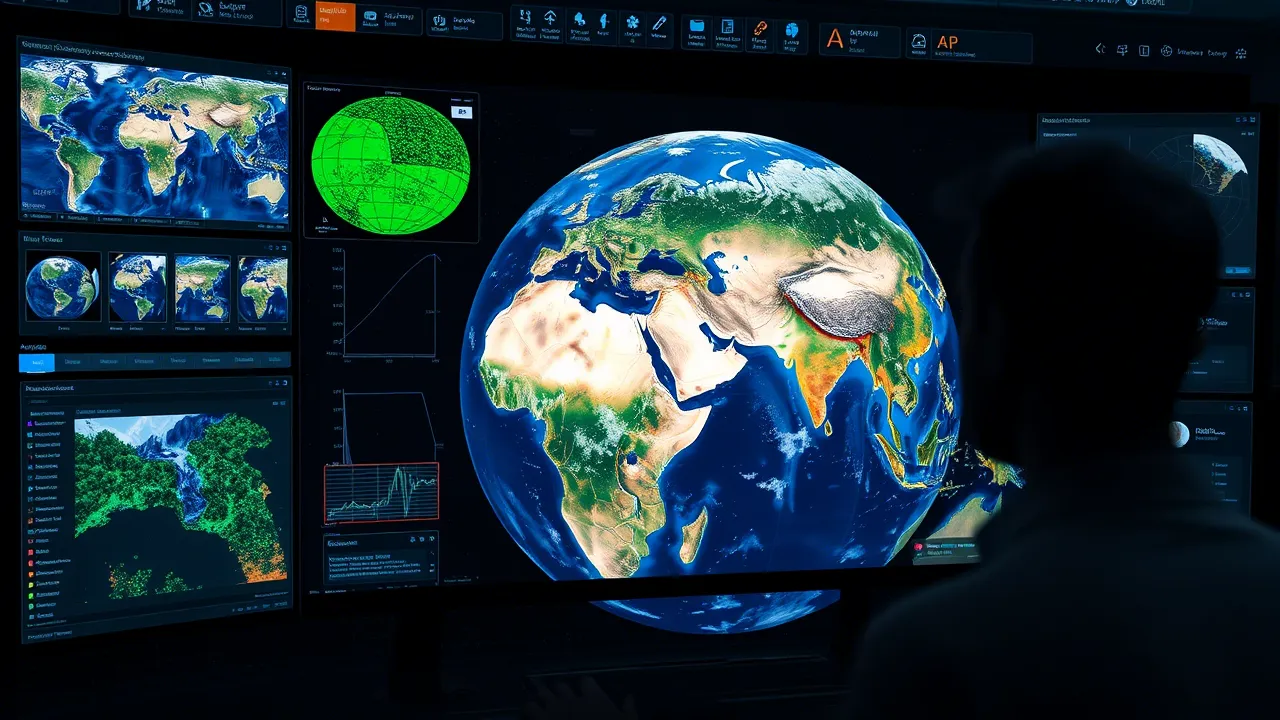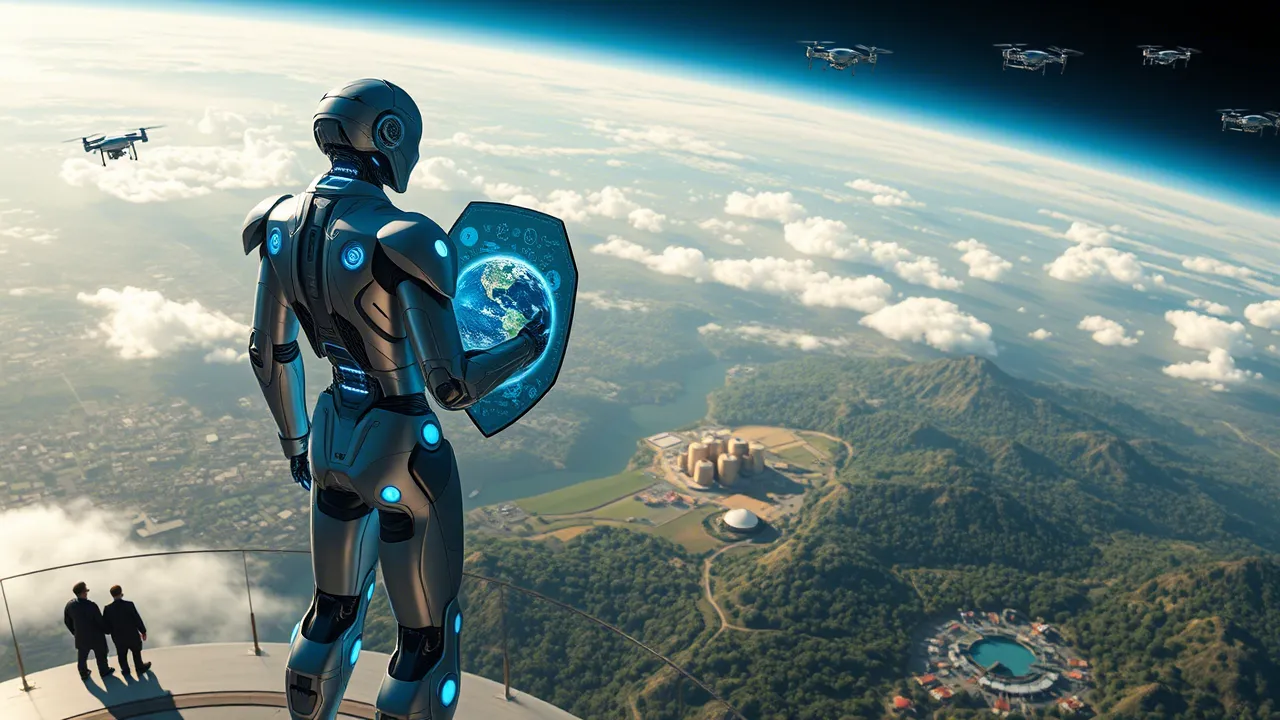Planet on Fire: Can AI Become Our Main Fire Extinguisher?
Forest fires raging across entire continents, unprecedented floods, glaciers melting at record speeds – these alarming images have become almost commonplace. The climate crisis is no longer an abstract threat from the future, but a harsh reality of today. In this incredibly complex struggle, humanity is seeking all possible tools. And one of the most promising, yet controversial, is artificial intelligence (AI). Can it become the very "fire extinguisher" that helps us cope with global warming, or does it itself carry new risks? Lets investigate.

Part 1: AI Diagnostics of Earth: How Artificial Intelligence Helps Understand Climate
Before treating a disease, an accurate diagnosis must be made. Artificial intelligence offers unique opportunities for a deep understanding of the processes occurring on our planet. Modern AI algorithms can process and analyze colossal volumes of data – from readings of thousands of weather stations and ocean buoys to information from space satellites. This allows for the creation of significantly more accurate and detailed climate models, forecasting developments decades ahead, including the probability of extreme weather events like hurricanes or droughts.
AI also plays a huge role in environmental monitoring. Computer vision technologies, such as those underlying services like Google Cloud Vision AI, allow for automatic analysis of satellite images and aerial photography. This helps to promptly track deforestation rates, the extent of oil spills, the condition of glaciers and coral reefs, and identify illegal dumps and pollution sources. Autonomous drones, for example, from companies like DJI (with Autonomous Features), are also increasingly used to collect such data, capable of surveying large and inaccessible areas. And platforms like NVIDIA Omniverse open up possibilities for creating detailed "digital twins" of entire ecosystems or cities, on which various climate scenarios can be modeled and the effectiveness of certain adaptation measures can be assessed.

Part 2: AI in Action: From Smart Grids to Green Innovations
Understanding the problem is the first step. The second is concrete action. And here, AI also offers an arsenal of tools.
- Energy Optimization: AI helps create "smart grids" that can more efficiently distribute energy, integrate intermittent renewable sources (sun, wind), predict peak consumption, and reduce losses. In "smart cities," AI manages building energy consumption and optimizes transport flows, reducing emissions.
- Sustainable Agriculture: AI-based precision farming technologies allow farmers to apply fertilizers and pesticides only where truly necessary, optimize irrigation, predict yields, and even monitor livestock health. This reduces the chemical load on soil and water and saves resources.
- "Green" Industry: AI is used to optimize production processes, reduce waste, find more environmentally friendly materials, and increase equipment energy efficiency.
- Accelerating Scientific Discoveries: Artificial intelligence helps scientists analyze data faster and find new solutions in "green" technologies – from developing more efficient solar panels and batteries to creating methods for CO2 capture and processing.
Many companies are already implementing AI solutions to track and reduce their environmental impact, understanding that sustainable development is not only a responsibility but also a competitive advantage.
Part 3: Two Sides of the Coin: AIs Energy Consumption and Challenges of Responsible Application
Despite its vast positive potential, the use of AI in combating the climate crisis is not without serious challenges. It is important to maintain the "caution" we spoke of.

- Energy Consumption of AI Itself: Training complex neural networks and operating large data centers necessary for AI systems require enormous amounts of electricity. If this energy is produced from fossil fuels, then AIs own "carbon footprint" could partially offset its climate benefits. Its crucial to develop "green AI" powered by renewable sources.
- Risks of Errors and Unforeseen Consequences: What if AI models err in climate predictions, or an energy grid management system fails with catastrophic consequences? Blind faith in the infallibility of technology can be dangerous. Control and backup systems are necessary.
- Accessibility of Technologies: Advanced AI solutions for climate are often expensive and require high qualifications for implementation and use. There is a risk that they will only be available to wealthy countries and corporations, exacerbating global inequality in climate change adaptation capabilities.
- Ethical Considerations: The collection and analysis of vast arrays of data on the environment and human activity by AI monitoring systems raise questions of privacy, data security, and potential misuse of information.
Conclusion: AI and Climate: Cautious Optimism and a Call to Joint Action
Artificial intelligence is not a panacea for the climate crisis, nor is it an absolute evil. It is an extremely powerful tool that, with proper, thoughtful, and responsible application, can make an invaluable contribution to stabilizing the climate and building a more sustainable future for our planet. "Hope for the best" is quite justified here, but it must be combined with a sober understanding of all challenges.
Success will depend on our ability to develop and implement AI solutions focused on the common good, minimize their negative impact, and ensure fair access to their benefits. This requires joint efforts from scientists, engineers, policymakers, businesses, and society as a whole. The development of "green," ethical, and transparent AI is the path that can help us transform artificial intelligence from a potential part of the problem into a key part of its solution.
